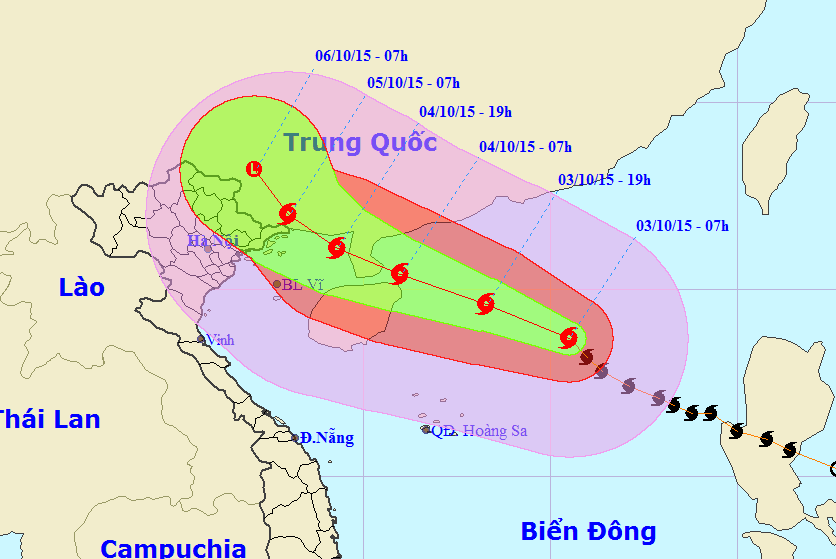Typhoon Mujigae, which is strengthening and approaching southern China, may also hit northern Vietnam earlier next week, a Vietnamese central weather agency said on Friday. There is a 50 percent likelihood that the typhoon will strike the area between Quang Ninh Province and Hai Phong City, according to the National Center for Hydro-Meteorological Forecasting Center. At 8:00 am Saturday, the typhoon was centered 410 km east-northeast of Vietnam’s Hoang Sa (Paracel), packing winds of up to 100 kph and gusts of 103-133 kph, the center said on its website. The tropical storm is moving west-northwest at 20 kph and may strengthen. Due to the typhoon, the northern area of the East Vietnam Sea, including the waters northeast of Hoang Sa (Paracel), will be rough with gusts of 150-183 kph and sea waves rising to 3-5 meters as of Saturday. At 7:00 am on Sunday, the typhoon will be seen in the waters southeast off China’s Leizhou Peninsula, with winds of 100-135 kph, and squalls of up to 183 kph. As of Sunday afternoon, the Gulf of Tonkin will have rough sea with winds of up to 102 kph and sea waves reaching a height of up to 4 meters. The typhoon will then move west-northwest at 15 kph, but it will likely change its course according to the three following possible scenarios, said Hoang Duc Cuong, director of the center. In Scenario 1, with a 40 percent likelihood, Typhoon Mujigae will move toward southern China and hit the Chinese province of Guangxi, and will also bring rain to northern Vietnam. There is a 50 percent likelihood for Scenario 2, in which the typhoon will head for the coast of northern Vietnam and will strike the area between Quang Ninh and Hai Phong. In the last Scenario, which is only 10 percent likely to happen, the typhoon will hit the southern area of the Vietnamese northern delta region, Cuong said. If Scenario 2 happens, the storm will slash China’s Hainan Island before entering the Gulf of Tonkin and making landfall in Vietnam’s mainland on Monday morning, October 5, he added. In this case, the typhoon will bring torrential rain to northern Vietnam, with rainfalls of up to 400 mm in delta areas and up to 200 mm in mountainous regions. On Friday, Deputy Prime Minister Hoang Trung Hai held an online conference with authorities of 17 coastal provinces and cities from Quang Ninh to Thanh Hoa to discuss measures to cope with the typhoon. Hai then requested that all local government make effective precaution plans for Scenario 2 to minimize possible damage.
Like us on Facebook or follow us on Twitter to get the latest news about Vietnam!


















































